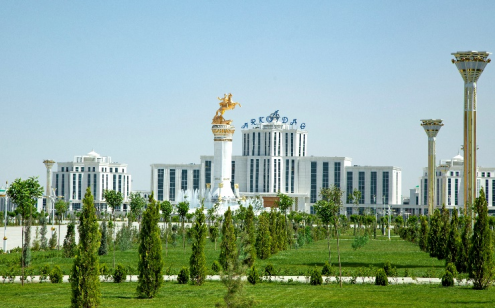Some of the world's largest importers of liquefied natural gas (LNG) are reducing their orders due to the 500% price surge within a year, raising concerns among major producers about potential long-term demand destruction. Pakistan's Ministry of Energy for example states that it would be more economically viable to invest in the TAPI project as the gas supplied through it would be cheaper than the imported LNG.
While LNG buyers, including numerous developing countries in Asia, are alarmed by prices that have doubled in the past month, many exporters in North America are trying to increase their export capacity, which will take years to become operational. Countries dependent on imported energy for production are in search of the new sources and are trying to ensure its smooth supply by building new facilities. As a strategic move, the Pakistani government is planning construction of the LNG terminal in Gwadar, which will likely be financed by China, and a dual-purpose pipeline from Iran to meet its natural gas import needs. Likewise, Pakistan's characterization of TAPI as an economically viable project should be interpreted in this way.
The developing economies such as India, China and Pakistan, aiming to reduce their carbon emissions, natural gas is viewed as a more acceptable fossil fuel as it burns cleaner than oil and coal. But the rise in natural gas prices is prompting countries' electricity suppliers to switch to coal and other economical but environmentally damaging fuels, and more importantly, causing them rethink their new LNG investments in Southeast Asia, which was expected to be center of LNG demand increase.
In Asia, which accounts for 70% of global LNG imports, most long-term contracts are oil-linked. However, South Asian countries such as India, Pakistan and Bangladesh, which account for 20% of Asia's total imports, have a much higher exposure to spot LNG prices, which are currently at high of over $50 per million British thermal units (mmBtu). While the increasing demand in Europe before winter causes prices to rise, another factor contributing to LNG price increases is the rising cost of chartering cargo ships.
That has raised alarm among developers in Southeast Asia, as plans for new LNG regasification terminals may now be delayed because of the high LNG prices and after government budgets were strained by costly COVID-19 outbreaks. Therefore, the projects to see the natural gas supply to be made by pipeline as a sustainable and economical alternative and to implement new pipelines in parallel with the existing ones are at the top of the political and economic agenda.
Nurmyrat Mommayev,
PhD Candidate at Marmara University's Department of Political Science and International Relations in Istanbul, Turkey









30635-90x604.jpg)




30625-90x604.jpeg)
_(1)30624-90x604.jpg)


